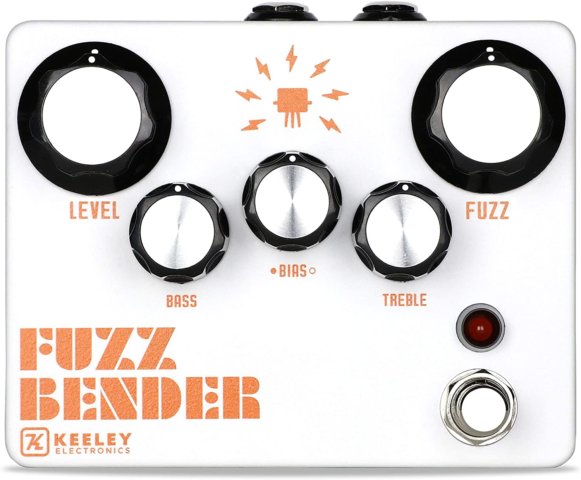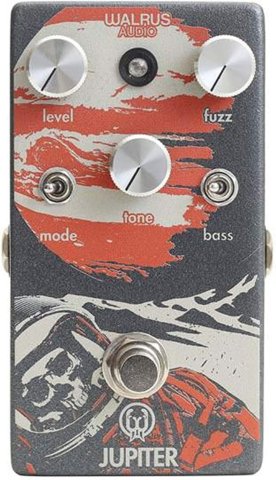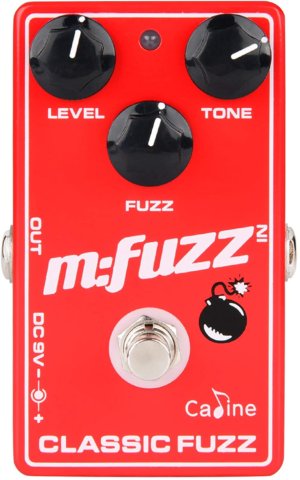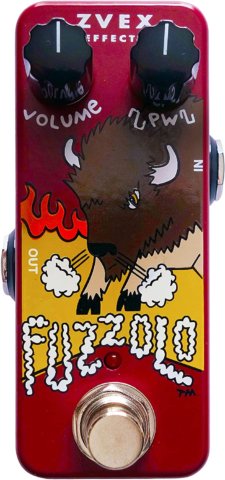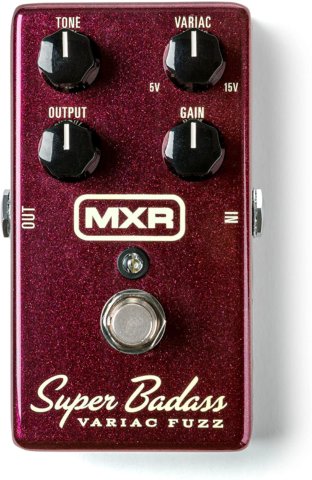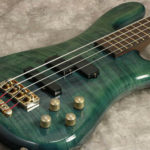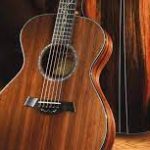
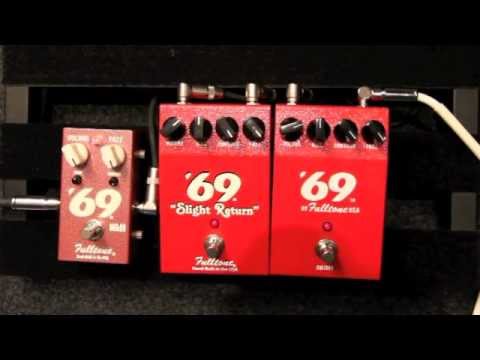
fuzz pedals
Fuzz pedals offer a sense of playability, where you can affect the high-gain distortion through your picking methods. They allow you to adjust the amount of fuzz, while maintaining the girth and bite of the effect. You can distort your sound to extreme levels, from bee buzzing effects to blown amp distortion sounds.
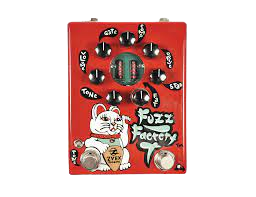
What is the Fuzz Effect?
The fuzz effect is a type of distortion characterized by hard-clipped wave forms. This “brick-wall processing” creates a very warm distortion that maintains its high-end frequencies, but adds what people describe as a hairy, wooly, a broken speaker woofer, or sounding like a swarm of bees.
If overdrive is light distortion, and distortion is normal levels of the effect, then fuzz is the extreme end. The amplitude is pushed so hard that not only is there hard-clipping, the wave form begins to resemble a square wave, and lots of complex overtones begin popping out aided by a frequency multiplier.
In a studio in 1961, Grady Martin played through a faulty preamplifier and that song became a smash hit. Companies scrambled to recreate the sound, but things really took off after 1964 when Dave Davies of The Kinks literally cut his speaker cones to create a similar sound. From there it was all history.
One might be tempted to call this a vintage effect if the popularity of guitarists like Jimi Hendrix, who used a fuzz pedal heavily, and Robby Krieger from The Doors didn’t persist to the point where current bands like The Smashing Pumpkins and The Beastie Boys are keeping the trend going.
We’ll celebrate this fact by contributing to the discussion by first talking about how fuzz is generated and how you should use it properly. Then we’ll cover the features you want to look for when considering a purchase.
At that point you’ll be fully informed and ready to start your hunt, and that’s when we’ll introduce you to our top picks from the current line-up in today’s modern market. Let’s get started.
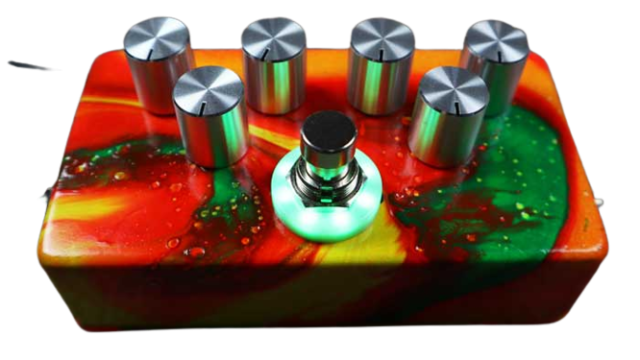
We’ll celebrate this fact by contributing to the discussion by first talking about how fuzz is generated and how you should use it properly. Then we’ll cover the features you want to look for when considering a purchase.
At that point you’ll be fully informed and ready to start your hunt, and that’s when we’ll introduce you to our top picks from the current line-up in today’s modern market. Let’s get started.
Sound-defining guitarists like Jimi Hendrix and Stevie Ray Vaughan played solid-state fuzz as much as tubes. All you need to worry about is what it sounds like, because that’s what your audience will be judging. These types of arguments are usually for people who can’t play that well, so they try to blame their gear.
I’d say the main question to ask yourself is if you’re looking for a specific classic sound or if you want a pedal with a ton of knobs so you have versatility. If you want a specific fuzz sound, then determine which pedal produces it and get that one that specializes in the sound. Otherwise, you’ll fare better with one that gives you options. Not every song calls for the same tone or effect.
Fuzz, as a type of distortion, has a natural place in the signal chain, but where is that and how do we know that’s right?
there is a specific order your pedals need to be in. This is defined by nature and logic and is more scientific than art-related. And it can be summarized like this:
Dynamics, Filters, & Pitch Shifters
Boost & Distortion
Modulation
Time
Fuzz needs to be fed your signal after you shape, clean, and tweak the waveform and frequency response to your liking. Because once you add in distortion, there’s no going back.
And because modulation and time-based effects react to the signal you feed them, it makes sense to get distortion out of the way before then too. Use your compressor, equalizer, and pitch shifting first, then boost to feed your fuzz pedal the high gain it needs.
UNDERSTANDING THE KNOB SETTINGS
Although you’ll find some fuzz pedals adding in an EQ stage and other nonsense, typically you’ll have two or three knobs tops. The main one is the Volume knob (sometimes just called Fuzz or Drive) that defines the sound of the distortion by allowing you to drive it harder and thus chop the waveform harder.
Recommended Fuzz Pedals
The Jupiter is a true bypass fuzz pedal inspired by the desire for gritty, thick and loud fuzz. The Jupiter’s controls allow you the ability to dial in the right amount of fuzz with the right tonal quality to either stand out in the mix, or ride it out with the drums and rhythm.
Designed as a homage to one a classic fuzz pedal, built to give you that instantly recognizable violin-like smooth saturated distortion fuzz tone that appears on some of the world’s greatest recordings.
The Fuzzolo is a mini footprint silicon fuzz with a rich subby texture and aggressive mid-range. The Fuzzolo has a post gain volume control and a pulse width control, and internal switch for selecting passive or active pickups.
The super badass variac fuzz is a dream come true for guitar players chasing vintage fuzz tone. This tasty fuzz is aggressive and biting, and with the twist of a knob, you can drag it into that “dying battery” territory much prized by tonechasers-no need to manage a collection of half-dead batteries.
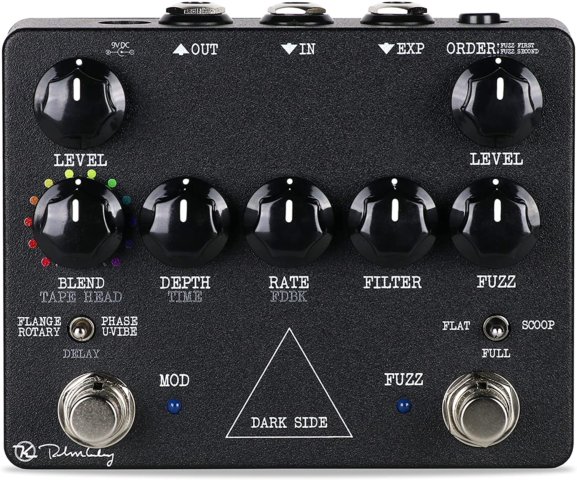
Keeley Dark Side Fuzz
Tone is in the fingers. Tone is in the mind. Effects can be a great way of expressing emotions or creating textures. The Dark Side is about creating sounds and adding new tones to your symphony. It’s the things you can’t create with your fingers or mind.
Dunlop JDF2 Fuzz Face®
The original fuzz face is constructed to the vintage Specs, with the original germanium pnp Transistor design. This is the classic fuzz box used by Jim Hendrix, Eric Johnson, and more. Power: single 9 volt battery.
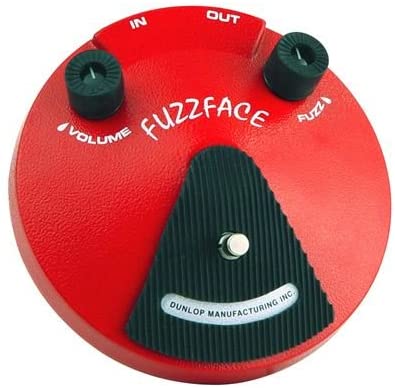

Foxgear Manic Fuzz
Inspired by Jimi’s sought-after tone, the Manic is a vintage fuzz face, but in an intuitive, very easy-to-use package. Often, guitarists purchase a fuzz pedal and plug it into a clean amp only to realize that it sounds terrible.
Keeley Fuzz Bender
The Fuzz Bender is built around vintage Japanese germanium to create its monumental fuzz tones. With the all new Bias Control, you control the attack and decay of your notes.
